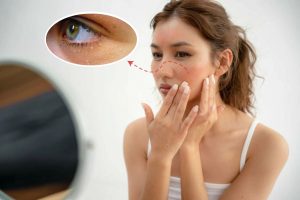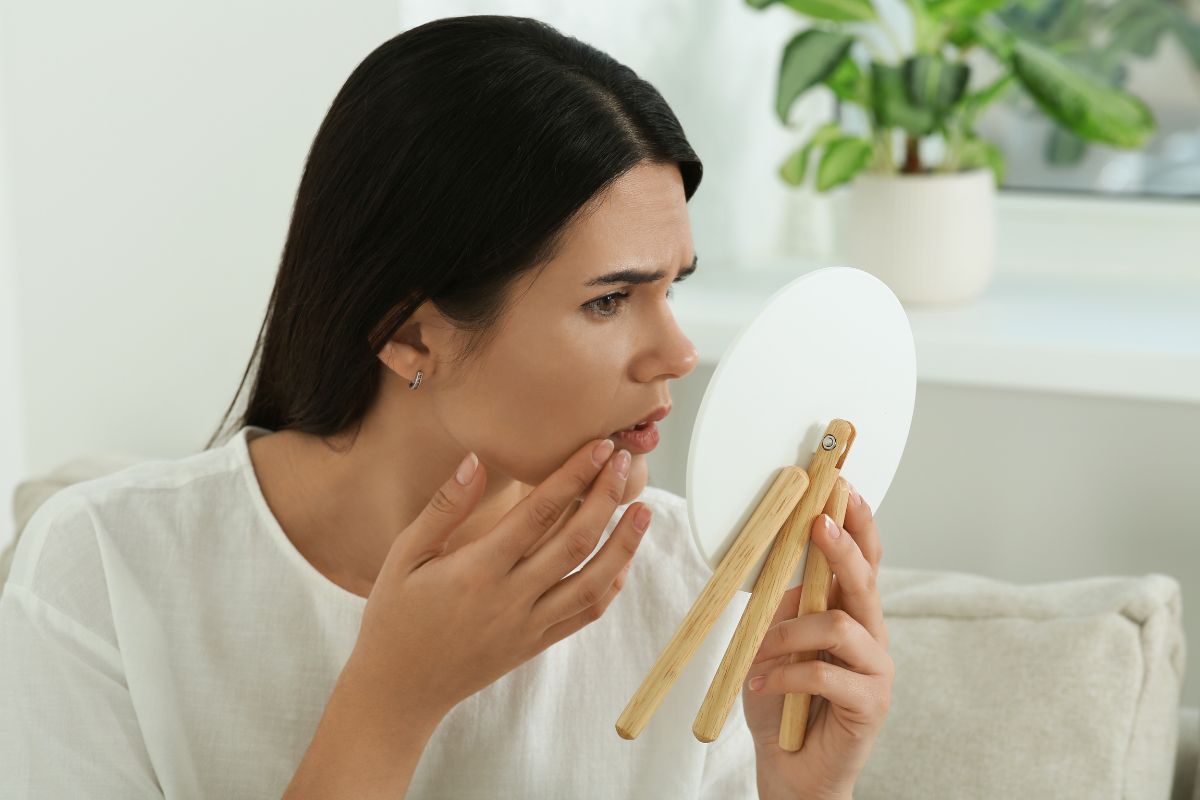

Have you ever noticed tiny white bumps on your skin that look like grains of sand or pearls? If so, you might have milialar or milia, a common and harmless skin condition that affects people of all ages. Milialar are tiny, firm cysts that result from the accumulation of dead skin cells beneath the surface of the skin. These growths are commonly found on the face, particularly in the areas around the eyes, nose, and cheeks. They may be misidentified as acne; however, they differ from acne in that they do not originate in a hair follicle and do not exhibit redness or inflammation. This article will delve into the causes, types, and treatment options for milia.We will also give you some tips on how to prevent milia from forming and how to take care of your skin. Whether you have a milialar yourself or you are just curious about them, you will find this article informative and helpful. So, let’s get started!
Milialar happens when old skin or keratin, a protein in your skin, hair, and nails, gets stuck under your skin. This creates small, white cysts that look like tiny pearls. But what causes this to happen? There are different factors that can contribute to the formation of milialar, depending on the type of milia you have. Some of the common causes are:


As we have seen, milialar are caused by various factors, such as skin damage, skin care products, genetic or medical conditions, and age. While it is not always possible to prevent milia, there are some steps you can take to reduce the risk of developing them or to make them less noticeable. These include:
If you have milia that do not go away on their own or bother you cosmetically, you may want to seek professional help to remove them. As we mentioned earlier, do not attempt to pop or squeeze milia yourself, as this can cause infection, scarring, or damage to your skin. Instead, visit a dermatologist who can perform safe and effective procedures to remove milia. Some of the options are:
The choice of the best procedure for milialar removal depends on the size, number, location, and type of milialar, as well as your personal preference and budget. Your dermatologist can help you decide which option is most suitable for you and explain the benefits and risks of each procedure.
Milia or Milialar are common and harmless skin cysts that can affect anyone at any age. They are usually not a cause for concern, but they can be annoying or unsightly for some people. By following a good skin care routine and avoiding potential triggers, you can prevent or reduce milia formation. If you want to get rid of milialar, you can try some OTC products or seek professional help from a dermatologist who can perform safe and effective procedures to remove them. With proper care and treatment, you can achieve a smooth and clear complexion.
Autism Spectrum Disorder, abbreviated as ASD, is a developmental condition that impairs one’s ability to…
With the ever-evolving beauty industry, makeup trends come and go, but there are a few…
The Dyson Airwrap revolutionized how individuals style their hair. It's the perfect blend of innovation,…
Mother's Day is the day to celebrate the amazing mothers who raised us and took…
Ah, prom season—the one marked by sparkling gowns, immaculate tuxes, lifelong memories. But one major…
The second weekend of Coachella 2025 was a full-fledged fashion extravaganza, with celebrities descending upon…